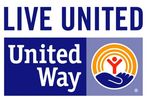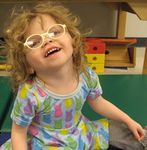Children's Therapy Connection - Washington Health System Children's Therapy Center
←
→
Page content transcription
If your browser does not render page correctly, please read the page content below
Children's Therapy Connection
Washington Health System Children’s Therapy Center
Spring 2021 Volume 25, Issue 2
The Power to
Change Children’s May is Better Hearing & Speech Month!
Lives
Here are some signs of a speech or
Speech Therapy: language disorder in a young child
Better Hearing & (age 3 and under):
Speech Month….. 1-2 Does not smile or interact with
others (birth and older)
Staff Milestones……2 Does not babble (4–7 months)
CTC Stars………… 3 Submitted by: Makes only a few sounds or ges-
Cathleen Gompers, MS, CCC/SLP tures, like pointing (7–12 months)
Physical Therapy: Does not understand what others
Therapeutic Horse- With speech and language disor-
say (7 months – 2 years)
back Riding………...4 ders among the most common condi- Says only a few words (12–18
tions that young children experience,
Occupational months)
parents and caregivers are encouraged
Therapy: Weighing to learn the signs of communication Says words that are not easily un-
In On Weighted disorders and seek an evaluation now derstood by others (18 months – 2
Blankets…..………..5 if they have any concerns. The mes- years)
Family Resource sage is a timely one, as May is nation- Does not put words together to
al Better Hearing & Speech Month make sentences (1.5–3 years)
Coordinator Position Produces speech that is unclear,
(BHSM).
……………………. 6 even to familiar people (2–3 years)
It’s especially important to be vigi- Here are some of the key benefits of
lant now, as some children who tradi- early treatment:
tionally would have been recom- Maximizes a child’s success.
mended for speech and language ser- Treatment at any age is worth-
vices by a daycare provider or pedia- while, but earlier is usually most
trician may have been missed due the effective. Early treatment can re-
pandemic, since many kids remained duce the need for school-based ser-
at home, with more limited interac- vices later.
tion with these professionals. Early Saves time and cost. It can take
intervention services are available, less time to treat a communication
https://whs.org/care-treatment/ even if they have been modified due delay or disorder when families act
childrens-care/childrens- to the pandemic. The Children’s on the early warning signs. Fewer
therapy-center/ Therapy Center provides in person treatment sessions can also mean
treatment and now is the time to act fewer out-of-pocket expenses.
on any concern.
(Continued on page 2)
1CHILDREN’S THERAPY CONNECTION
Speech Therapy
May is Better Hearing & Speech Month Please contact a team member of the CTC
(From page 1) Speech Department have questions regarding your
Many early intervention programs offer free or child’s speech/language development. To schedule
low-cost services to children ages birth to 3 an appointment for an evaluation the front office
years. They also can link you to other staff will gladly assist with this, please call, 724-
community supports. 942-6100.
Prepares a child for kindergarten. What hap-
pens between birth and age 3 lays the founda- Learn more about the benefits of early identifica-
tion for kindergarten readiness. Strong speech, tion and treatment at www.IdentifytheSigns.org.
language, cognitive, and social skills are neces-
sary for reading, writing, and academic suc- For more information and resources go the ASHA
cess—as well as all the other demands of website: https://www.asha.org/
school.
Sets a child on a course to school, social, and
life success. All families want what’s best for Reference: https://www.asha.org/bhsm/
their children. Acting early can have positive,
long-lasting effects on your child’s communica-
tion, social relationships, learning, and daily life
activities well into adulthood.
Staff Milestones!
The following CTC staff have reached a 5 years
milestone in their years of service! Theresa Philips, Occupational Therapist
Congratulations! Kristi Knapp, Speech –Language
Pathologist
15 years Leanna Crowley, Speech –Language
Marcie Bonus, Lead Speech –Language Pathologist
Pathologist
10 years
Karen Andy, Administrative Associate
Nancy Travis, Administrative Associate
Megan Hursh, Speech –Language
Pathologist
Ellen Tripodi, Lead Occupational
Therapist
2CHILDREN'S THERAPY CONNECTION
CTC Superstars!
Physical Therapy Speech Therapy
Erin Studt Bennett Novogurski
Bennett has been using his new speech generating
Erin is our PT star! Erin has been working so device like a ROCK STAR! He consistently uses it in
hard during physical therapy and has made huge his therapy sessions, at home, and even in the car. He
improvements since she first was evaluated as an can answer many questions, comment, and even tell
infant. It has been so fun to watch her grow and jokes.
achieve every milestone from rolling, crawling, We are so happy that his device is helping him
pulling up to standing, and now walking! Erin is consistently express himself in all of his environ-
now taking 10-15 steps without any assistance ments.
and is gaining confidence every day to explore YOU GO BENNETT!!!
her environment on her own. Erin is working on
improving strength and balance to walk further Ms. Jodi and Ms. Emily are so very proud of you!
distances and walk in all environments. We are so
proud of Erin, keep up the great work!
Occupational Therapy
Preston Ciniello
Preston Ciniello is an OT star! Preston has been
working very hard to improve his fine motor and
bilateral coordination skills. Preston is always full
of energy and ready to play! He loves to play Pop
-Up Pirate and is a big fan of super heroes. Keep
up the good work, Preston! Miss Theresa is so
proud of you!
3CHILDREN'S THERAPY CONNECTION
Physical Therapy
Therapeutic Horseback Riding
By: Jennifer Kraus, PTA
As warm weather approaches, many families
are looking for ways to keep their kids active out-
doors. Therapeutic horseback riding is an excel-
lent way to work on therapy goals without it really
feeling like work! Children can benefit from rid-
ing in areas of gross motor, fine motor, speech,
and social-emotional domains all while participat-
ing in what they see as just a fun recreational ac-
tivity. See below for a list of riding programs
CTC families have participated in previously.
Simon Medved gets a little extra support from a volunteer.
Therapeutic Horseback Riding
Programs:
In-Stride with Therapeutic Riding Inc.
Eighty Four, PA
Brynn Evans rides tall on her favorite horse, Vegas.
724-884-5660
Programs often run Spring through Fall, and fill instride-horse.com
up quickly! While therapeutic riding is not cov-
Horse ‘n Soul Riding Academy
ered by insurance, there are grant and funding
Washington, PA
programs that may help to reduce the costs to
724-288-5088
families. When scheduling lessons for you child,
horsensoul.com
it’s a great idea to ask if there are organizations
the riding program works with or recommends to
aid in funding. Therapists have also aided families Horses with Hope
Upper St Clair, PA
in the past by writing letters explaining why
horseback riding would be therapeutically benefi- 412-932-6036
horseswithhope.org
cial for their children, so that families can move
forward in the grant application process.
Riding for the Handicapped of Western PA
Wexford, PA
724-443-4485
rhwpa.org
4CHILDREN’S THERAPY CONNECTION
Occupational Therapy
Weighing In On Weighted Blankets There are many safety aspects to consider when
Submitted by Karen Cieleska COTA/L
using weighted blankets specifically with children.
Weighted blankets have grown in popularity It is important to follow the manufacturers’ usage
over the past several years. The appeal of provid- guidelines. For instance, weighted blankets should
ing a calming effect to help with anxiety or im- not be used for infants and children under the age
prove sleep seems to be the overall draw for of two. Also, children should be physically capable
adults and children alike. I wanted to take an op- of removing the blanket themselves. All weighted
portunity to address weighted blankets in general
blanket use must be supervised, especially for chil-
with a brief review of the theory behind the use of
weighted items and examine safety precautions dren under the age of six. During use, the blanket
regarding blanket usage. should never be pulled over the child’s face and the
child should never be tightly wrapped in the blan-
Weighted materials such as vests or blankets
ket. The recommended weight ratio of the blan-
are sensory integration modalities sometimes used
in occupational therapy. Sensory integration is a ket should be 10% of the child’s weight. Check
central nervous system function which organizes with your pediatrician regarding weighted blanket
sensory information from the individual and envi- use especially for children with sleep apnea, cer-
ronment for regulation of behavior and perfor- tain sleep disorders, and respiratory problems.
mance of skill. (Wagenfeld, Kaldenberg, & Hona-
ker, 2017) The specific type of sensory integra-
tion in which weighted materials are used is called With all of this in mind, there is no definitive con-
deep touch pressure therapy or deep pressure clusion as to whether the benefits of weighted blanket
stimulation. This particular input provides indi- use with children outweigh the drawbacks. It is also
viduals with a calming effect to their central nerv-important to consider what works for one child
ous system, relieving the highly aroused. doesn’t necessarily work for all. Please use them with
caution and be sure to consult your child’s doctor or
Children on the Autism spectrum or with occupational therapist prior to use. If your child is
ADHD can sometimes benefit from the use of experiencing sensory issues, please feel free to call
weighted materials both in the clinic and at home. and schedule an evaluation, 724-942-6100.
Also, if a child displays tactile defensiveness and
resists physical input such as squeezing or brush-
ing, implementing a weighted blanket or vest is a
viable alternative. The use of weighted items can
potentially improve attention, lower stress and
anxiety levels, and reduce off-task behaviors as
demonstrated in clinical settings.
There have been limited systematic studies
conducted regarding use of weighted blankets to References:
reduce sleep issues in children particularly those Gringras, P., Green, D., Wright, B., Rush, C., Sparrowhawk, M.,
Pratt, K., . . . Wiggs, L. (2014). Weighted blankets and sleep in
diagnosed with ASD. One specific study deter- autistic children--a randomized controlled trial [Abstract]. PEDI-
mined no increase in hours slept or ease of in- ATRICS, 134(2). doi:10.1542/peds.2013-4285d
duced sleep; however, the blanket was favored by Wagenfeld, A., Kaldenberg, J., & Honaker, D. (2017). Founda-
the study’s participants and their parents. tions of pediatric practice for the occupational therapy assistant.
(Gringras et al., 2014) Thorofare, NJ: SLACK Incorporated.
5CHILDREN'S THERAPY CONNECTION
Family Resource Coordinator Position
Want To Be Part of Our CTC Team? Those interested should have experience,
knowledge and passion for educating, informing and
Washington Health System Children’s Therapy empowering families in need of support. This indi-
Center has an exciting opportunity for someone vidual must be able to direct families to appropriate
who is interested in being our Family Resource Co- resources in their surrounding communities based
ordinator. This opportunity is a contract position upon each child’s/families individual needs in an un-
that is a flexible 8-12 hours per week between our biased objective manner.
McMurray and Washington locations. It is fully Preferred qualifications: In order to maximize the
funded through a United Way grant that is sched- effectiveness of this program and to better connect
uled to renew through June 2022. with the families we work with, the ideal candidate
The role of the Family Resource Coordinator is will be someone with:
to help families who attend Children’s Therapy a child who has special needs in order to better
Center: connect and empathize with the families through
this program
Obtain appropriate healthcare services for their OR
children 2 or more years’ experience working with chil-
Get connected to community resources that ad- dren with special needs and their families
dress their special needs Please contact us at 724-942-6123 for further in-
Find training and educational resources about formation on the qualification criteria and the scope
childhood diseases and disabilities of responsibilities of the Family Resource Coordina-
Learn successful strategies for effective com- tor position. We look forward to hearing from inter-
munication between caregivers, physicians, ested individuals soon!
schools or other agencies Sincerely,
CTC Team
United Way New Health Insurance?
We only learn of your
child’s insurance changes by you
informing us.
WHS is proud to partner with
Washington United Way
Please inform the front office of any
changes ASAP to avoid financial issues.
https://whs.org/care-treatment/childrens-care/childrens-therapy-center/
6You can also read



























































